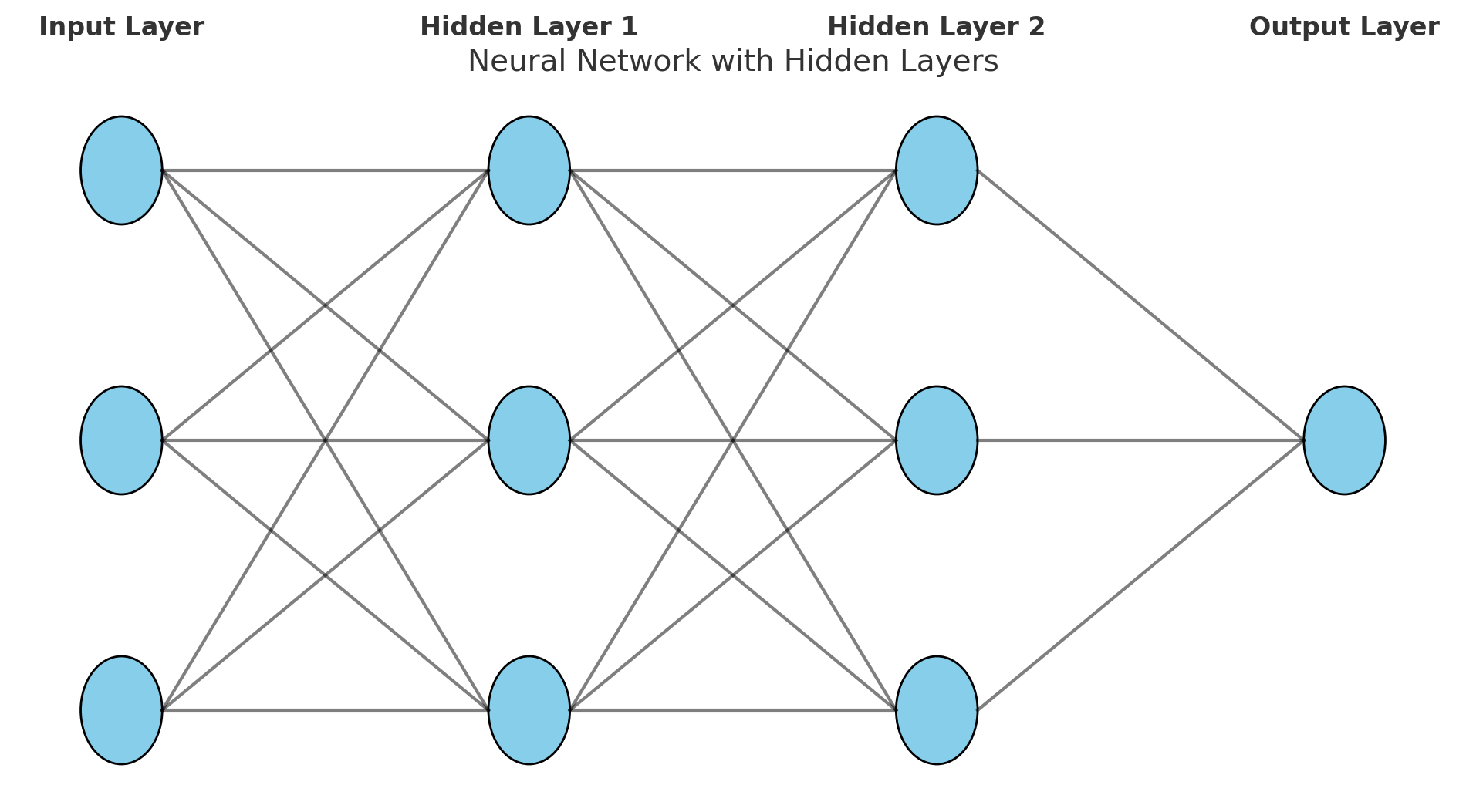What is a Hidden Layer?
In deep learning, a hidden layer is a middle layer between the input and the output layers.
It is called “hidden” because we do not see its inputs or outputs directly; they are inside the model.
Layman Explanation:
Imagine you are baking a cake:
- Inputs: You provide flour, sugar, eggs, and milk.
- Hidden Layer: The cake is mixed, baked, and decorated (this is the hidden process—you don’t see each step separately inside the oven).
- Output: You get a delicious cake.
Similarly in a deep learning model:
- Inputs: Raw data (like pixels, numbers, text).
- Hidden Layer: The model processes the data step by step, transforming it in ways we cannot directly see.
- Output: Final result (like ‘Cat’ or ‘Dog’).
Why is it called “Hidden”?
- Because we cannot observe or understand its work directly.
- It is like a black box, but it does the crucial job of extracting patterns and features from data.
Why do we need hidden layers?
| Reason | Explanation |
|---|---|
| Extract complex patterns | Helps the model detect complex relationships in data |
| Add flexibility | Allows the model to learn non-linear decisions |
| Build deep models (Deep Learning) | Stacking many hidden layers makes deep learning work |
Simple Analogy:
Imagine your brain is trying to decide if a picture is of a cat or a dog.
- Input layer: Sees the raw image.
- Hidden layers: Neurons might detect edges, shapes, whiskers, tails (step by step).
- Output layer: Finally decides → Cat or Dog.
Without hidden layers → the model would only see raw pixels and try to guess directly (which is very hard).
With hidden layers → the model breaks down the problem into small steps and makes better decisions.
Visual Representation:
[Input Layer]} → [Hidden Layer 1] → [Hidden Layer 2] → [Output Layer]
{Raw Data} → {Extract patterns} → {Combine patterns} → {Final Prediction}
